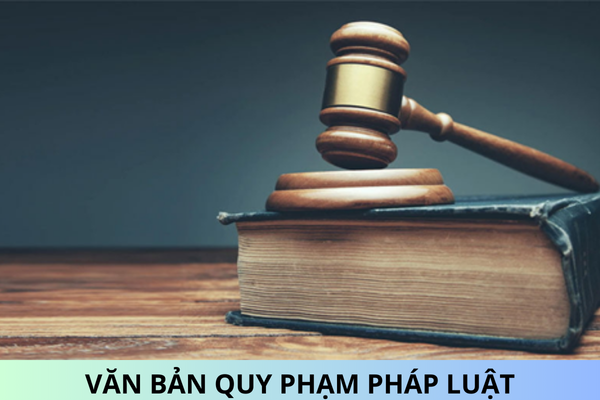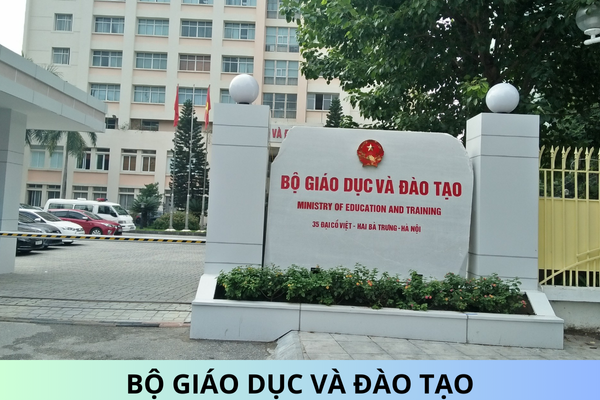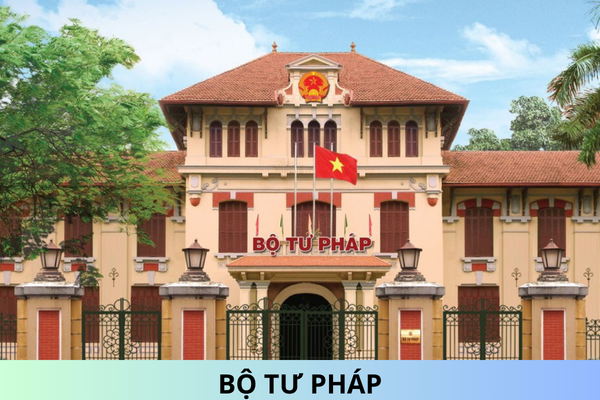What is form of reporting information on areas contaminated with mines and explosives after the war in Vietnam?
What is form of reporting information on areas contaminated with mines and explosives after the war in Vietnam? What are regulations on report of confirmed contaminated area after the war in Vietnam? What are regulations on standards of engineering, surveying and explosive discovering after the war in Vietnam?
Please advise. Thankyou.
What is form of reporting information on areas contaminated with mines and explosives after the war in Vietnam?
In the Form 4, Appendix III of the sample program and plan to overcome the consequences of mines and explosives, attached to Circular 195/2019/TT-BQP stipulating form of reporting information on areas contaminated with mines and explosives such as:
Form No. 04: Form for reporting information on areas contaminated with mines and explosives
(NAME OF UNIT)
-------SOCIALIST REPUBLIC OF VIETNAM
Independence - Freedom - Happiness
---------------Number: … …/ ……
…………., day ... month ... year …. ..
REPORT
INFORMATION ON THE AREA OF SUSPECTED UXO POLUTIONS
To: ……………………………………………………
I. INFORMATION ABOUT REPORTING AGENCIES AND UNITS
101
Name of agency, unit
……………………
102
Address
……………………
103
Telephone: Fax
……………………
104
……………………
105
Information about the commander of the unit or individual reporting
Full name : …………………………………………………….
Position : …………………………………………………… _
Call me : …………………………………………………… . _
Email: …………………………………………………….
II. INFORMATION ABOUT POLLUTION AREA
201
Pollution area code
(contaminated area code is the order of polluted areas defined by the reporter)
BMA code/Commune code/District code/Province code
……………….. / …………… / ……………………. / …………
202
Pollution area location
(code BM A Database Center issued from the database)
Province, city: ……………………………………………………
District , town : …………………………………………………… _
Commune, ward: …………………………………………………….
Village, hamlet, group: …………………………………………………….
BMA code : ……………………………………………………
203
BMA area coordinates (WGS84)
Longitude ( E): …………………………………………………….
Latitude (N): …………………………………………………….
204
Estimated area of the contaminated area
Area (m 2 ): …………………….
Length (m): ………….; Width (m)…………..
205
Is the land in that area being used?
Yes
No
206
Soil type of contaminated area
□ Residential land
Agricultural land
Garden land _ _ _
□ Land for perennial crops
Wet land _ _ _ _
□ Forestland
□ Construction land
□ Traffic land
Irrigation land
□ Unused land
□ Other land …………………….
207
Types of mines and explosives in contaminated areas
□ Various types of metal shards
Demolition Bomb
□ Bombs
□ All kinds of bullets, cannons, mortars
□ Grenade
□ Landmines _ _ _
□ Anti-tank mines
□ Other types of explosives, specifically:
…………………….
Do n't know
208
Has there been an accident in this area?
Yes _
No
□ Do n't know
209
Pollution depth
□ Right on the surface
□ From 0 m to 1 m
□ Depth more than n 1 m
Do n't know
210
Pollution area type
□ Military Area
□ Former war zone here
□ Minefield Area
□ Unknown
211
Priority need RPBM
□ High (to ensure safety and develop the country's economy)
□ Medium (safety and local economic development)
Low _
212
Other comments on polluted areas (general description)
……………………..
……………………..
……………………..
Note: If you can provide a map of the polluted area, the better and if there is an accident in the area, please attach an accident report or incident report here.
UNIT LEADER ( Signature , stamp)
What are regulations on report of confirmed contaminated area after the war in Vietnam?
In Form 5, Appendix III, sample program and plan to overcome consequences of mines and explosives, attached to Circular 195/2019/TT-BQP stipulating the form of reporting on confirmed contaminated area as follows:
Form No. 05: Report of confirmed contaminated area
(NAME OF UNIT)
-------SOCIALIST REPUBLIC OF VIETNAM
Independence - Freedom - Happiness
---------------Number: … …/ ……
…………., day ... month ... year …. ..
REPORT
CONFIRMED CONTAMINATED AREA
1. IDENTIFICATION INFORMATION
1.1 Name of organization, unit
……………………..
1.2. Captain's Name
……………………..
1.3. Team name
……………………..
1.4. Contamination Confirmed Area (CHA) Code:
……………………..
1.5. Status of Area Confirmed Pollution
□ Not cleared yet
□ Clearing
□ Clearance complete
Has been liberated*
1.6. Quest Code
……………………..
1.7. Start day
……………………..
1.8. End date _
……………………..
1.9. Conscious
……………………..
1.10. District
……………………..
1.11. Commune
……………………..
1.12. Village
……………………..
1.13. Clearance Priority
Tall
Average
Low
*Applicable to areas with confirmed UXO contamination identified during initial survey, but released / removed after re-survey.
2. CURRENT SITUATION OF LAND USE
2.1. Purpose of using land:
□Agriculture
□Forestry
□ Infrastructure construction
□Residential Area
Other
2.2. If different (specify):
2.3. Beneficiaries:
Personal
Community
3. ERW AND EXPLOSION FINDED IN TECHNICAL SURVEY
3.1. Species
3.2. Quantity
3.3. Status**
3.4. Contamination Confirmed Area Code
3.5. Total BMVN found in PARTS
3.6 . Note
* * Select one of the following: Canceled; Storage
4. TERRARY
4.1. Plant type
□ Grass
□ Bushes
□No plants
□ Bamboo
□ Forest of Trees
Other
4.2. Vegetation Coverage:
Thick
□ Thin Bald
4.3. Means of clearing vegetation
Crafts
□ Lawn mower
□Mechanical
Combination
4.4. Geological type
□ A (Soft)
C ( Hard)
B (Average)
□ D ( Wet , Mud )
4.5. Soil type
Sand
□ Chicken liver
Lightning
Rocks
Other
Red
Meat
□ Gravel
□ Swamp
4.6. Area type
Wasteland
□Old QS Base
□ The beach
Fields
Urban
Roadside
□Forest
Other
□ Seaside
□ Dress _
□Residential Area
□Major Road
Hills and Mountains
Administrative Headquarters
Trails
4.7. Type of vehicle that can reach the area
□One Bridge
□Two Bridges
□Sixteen seats
4.8. Topographic
□ Slope
□ A little bit of a snail
Flat
5. AREA OF POLLUTION DEFINED AREA
Numerical order
Point
degree _ _
Latitude
Area Code
first
First point _
2
Corner point 1
3
Corner point 2
…
.....
Final point
5.1. Area Area (m2):
5.2. How many % of BMVN contaminated areas can be accessed?
□ 25% 50%
□ 75% 100%
5.3. Inaccessible month:
□ January February March April
□ May June July August
□ September □ October November December
5.4. If any part of the CHA is inaccessible , state why :
6. QUALITY VERIFICATION AND QUALITY VERIFICATION _
Organizations and units of investigation, survey and demining
Confirmation of the captain of investigation, survey and demining
Name ______________________
Name ______________________
Date ______________________
Date ______________________
Sign _________________
Sign _________________
|
|
|
What are regulations on standards of engineering, surveying and explosive discovering after the war in Vietnam?
In Appendix IV, sample program and plan to overcome the consequences of mines and explosives attached to Circular 195/2019/TT-BQP stipulating standards of engineering, surveying and explosive discovering, such as:
|
|
|
|
|
|
|
|
|
|
|
|
|
|
|
|
|
|
|
|
|
|
|
|
|
|
|
|
|
|
|
|
|
|
|
|
|
|
|
|
|
|
|
|
|
|
|
|
|
|
|
|
|
|
|
|
|
|
|
|
|
|
|
|
|
|
|
|
|
|
|
|
|
|
|
|
|
|
|
|
|
|
|
|
|
|
|
|
|
|
|
|
|
|
|
|
|
|
|
|
|
|
|
|
|
|
|
|
|
|
|
|
|
|
|
|
|
|
|
|
|
|
|
|
|
|
|
|
|
|
|
|
|
|
|
|
|
|
|
|
|
|
|
|
|
|
|
|
|
|
|
|
|
|
|
|
|
|
|
|
|
|
|
|
|
|
|
|
|
|
|
|
|
|
|
|
|
|
|
|
|
|
|
|
|
|
|
|
|
|
|
|
|
|
|
|
|
|
|
|
|
|
|
|
|
|
|
|
|
|
|
|
|
|
|
|
|
|
|
|
|
|
|
|
|
|
|
|
|
|
|
|
|
|
|
|
|
|
|
|
|
|
|
|
|
|
|
|
|
|
|
|
|
|
|
|
|
|
|
|
|
|
|
|
|
|
|
|
|
|
|
|
|
|
|
|
|
|
|
|
|
|
|
|
|
|
|
|
|
|
|
|
|
|
|
|
|
|
|
|
|
|
|
|
|
|
|
|
|
|
|
|
|
|
|
|
|
|
|
|
|
|
|
|
|
|
|
|
|
|
|
|
|
|
|
|
|
|
|
|
|
|
|
|
|
|
|
|
|
|
|
|
|
|
|
|
|
|
|
|
|
|
|
|
|
|
|
|
|
|
|
|
|
|
|
|
|
|
|
|
|
|
|
|
|
|
|
|
|
|
|
|
|
|
|
|
|
|
|
|
|
|
|
|
|
|
|
|
|
|
|
|
|
|
|
|
|
|
|
|
|
|
|
|
|
|
|
|
|
|
|
|
|
|
|
|
|
|
|
|
|
|
|
|
|
|
|
|
|
|
|
|
|
|
|
|
|
|
|
|
|
|
|
|
|
|
|
|
|
|
|
|
|
|
|
|
|
|
|
|
|
|
|
|
|
|
|
|
|
|
|
|
|
|
|
|
|
|
|
|
|
|
|
|
|
|
|
|
|
|
|
|
|
|
|
|
|
|
|
|
|
|
|
|
|
|
|
|
|
|
|
|
|
|
|
|
|
|
|
|
|
|
|
|
|
|
|
|
|
|
|
|
|
|
|
|
|
|
|
|
|
|
|
|
|
|
|
|
|
|
|
|
|
|
|
|
Best Regards!










